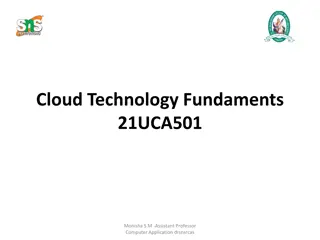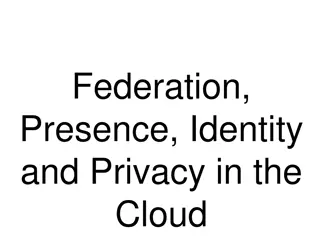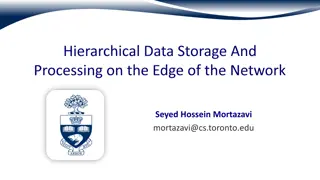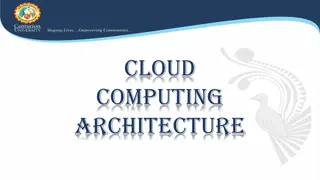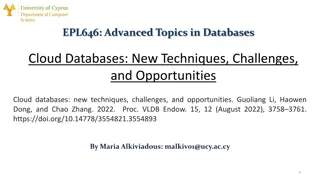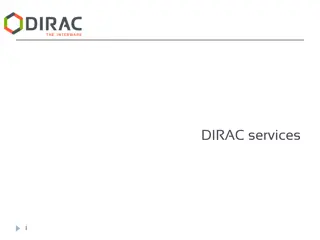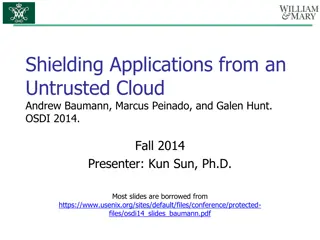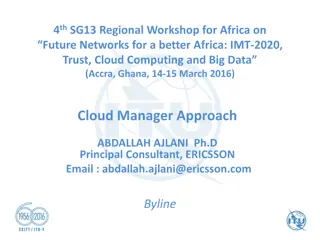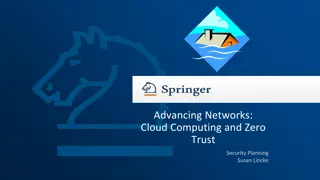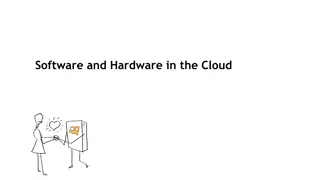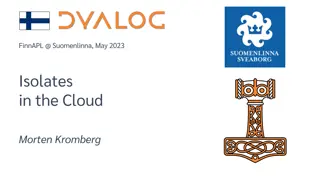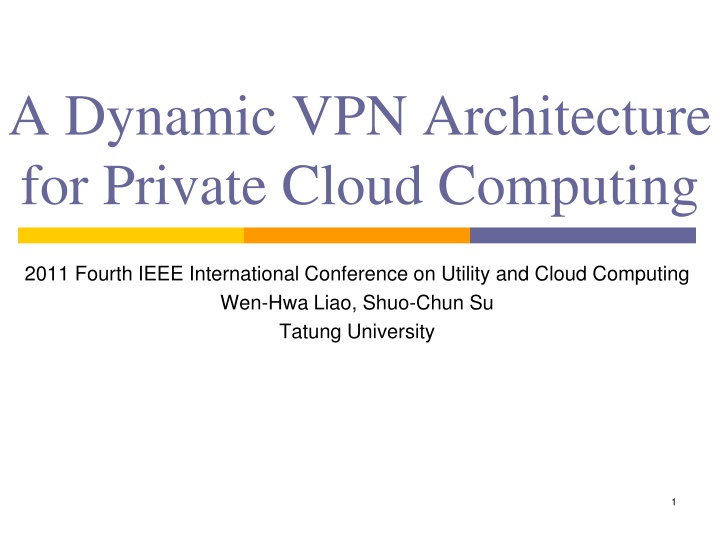
Dynamic VPN Architecture for Private Cloud Computing
Explore a dynamic VPN architecture for private cloud computing including different VPN frameworks like Full-Mesh, Hub-and-Spoke, and Bipartite. Learn about system architecture, packet format, exchange modes, and processes involved in managing connections.
Download Presentation

Please find below an Image/Link to download the presentation.
The content on the website is provided AS IS for your information and personal use only. It may not be sold, licensed, or shared on other websites without obtaining consent from the author. If you encounter any issues during the download, it is possible that the publisher has removed the file from their server.
You are allowed to download the files provided on this website for personal or commercial use, subject to the condition that they are used lawfully. All files are the property of their respective owners.
The content on the website is provided AS IS for your information and personal use only. It may not be sold, licensed, or shared on other websites without obtaining consent from the author.
E N D
Presentation Transcript
A Dynamic VPN Architecture for Private Cloud Computing 2011 Fourth IEEE International Conference on Utility and Cloud Computing Wen-Hwa Liao, Shuo-Chun Su Tatung University 1
Virtual Private Network(VPN) A virtual private network extends a private network across a public network, such as the Internet. Technical Tunneling Encryption & Decryption Key management Authentication 2
VPN Framework (Full-Mesh) Every node is connected directly to others. Advantage Shortest route No bottleneck Internet Gateway Disadvantage Each gateway(GW) must have an Internet key exchange(IKE) policy for each of the other GWs Can not traffic control VPN tunnel 3
VPN Framework (Hub-and-Spoke) Every GWs connects to Hub-GW. Advantage Each GW needs only one IKE policy to communicate with all other GWs. Traffic control Hub-GW Internet Gateway VPN tunnel Disadvantage Delay bottleneck 4
VPN Framework (Bipartite) Based on hub-and-spoke and full-mesh The corporation and the cloud service provider can be deemed as spokes under the network management of hub-GW. 5
System Architecture CE Customer Edge PE Provider Edge 6
Packet Format Connection between CE and PE 7
Exchange modes CE_VLAN_request Establishing VLAN CE_VLAN_response VLAN ID CE_MAC_request Querying about permission for connection CE_MAC_response Checking in the database whether the connection is permitted CE_MAC_terminate Delete the VLAN ID for connecting 8
Conclusion The user needs only to connect hub-GW by using VPN like PPTP, IPsec or SSL without having to implement a complex network framework. The management of hub-GW uses bipartite. Needing to maintain extra table. 12

